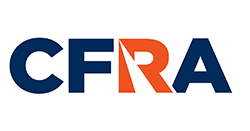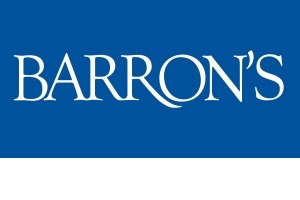No Results Found
The page you requested could not be found. Try refining your search, or use the navigation above to locate the post.

Buffalo Dividend Focus Fund (BUFDX / BUIDX) co-portfolio manager Jeff Deardorff, CFA, recently appeared on a webinar hosted by CFRA Research and Dividend.com with the topic “Dividend Funds: Do We Even Need Bonds?” Moderated by Todd Rosenbluth, Head of EFT and Mutual Fund Research at CFRA Research, the webinar discussed the benefits of dividend investing, the current low interest rate environment, and the rotation by investors into stocks to find income through dividends.
During Jeff’s presentation, he discussed his team’s investment approach for the Buffalo Dividend Fund portfolio and ultimately answers the question “Do we even need bonds?” Jeff ends his presentation with a case study on Citizens Financial Group. Some of the main points Jeff covered included:
“We are careful to not just look for the highest yield and dividend stocks, because oftentimes that’s a signal the company is actually underperforming and the current dividend may not be sustainable.“
~ Jeff Deardorff, CFA, Co-Portfolio Manager, Buffalo Dividend Focus Fund
To access the entire webinar replay at no cost, CLICK HERE.

Opinions expressed are those of the author or Funds and are subject to change, are not intended to be a forecast of future events, a guarantee of future results, nor investment advice. References to other mutual funds should not to be considered an offer to buy or sell these securities. Dividend payments are not guaranteed. As of 6/30/21 the Buffalo Dividend Focus Fund top 10 equity holdings were Microsoft 4.58%, Apple 3.85%, Viper Energy Partners 2.90%,
Visa 2.74%, CVS Health 2.49%, Elanco Animal Health 2.43%, Bank of America 2.20%, Horizon Therapeutics 2.09%, UnitedHealth
Group 2.03%, Citizens Financial Group 1.93%. Top 10 holdings for the quarter are not disclosed until 60 days after quarter end. A complete list of the Fund’s holdings can be found here. Fund holdings are subject to change and should not be considered a recommendation to buy or sell any security.
Performance data quoted represents past performance; past performance does not guarantee future results. The investment return and principal value of an investment will fluctuate so that an investor’s shares, when redeemed, may be worth more or less than their original cost. Current performance of the fund may be lower of higher than the performance quoted and can be found here; quarter-end performance can be found here. Performance is annualized for periods greater than 1 year.
The page you requested could not be found. Try refining your search, or use the navigation above to locate the post.
Jeff Deardorff, CFA, Buffalo Dividend Focus Fund co-portfolio manager, was a featured presenter during a recent CFRA Research webinar, where he discussed the current state of dividend investing and ultimately answered the question “Do We Even Need Bonds?”
Craig Richard, Buffalo Early Stage Growth Fund co-portfolio manager, was recently interviewed by The Wall Street Transcript where he discusses IPOs and being overweight in the technology sector. He also shares his thoughts on investing in early stage growth companies, highlighting several examples of companies in the Fund’s portfolio.
Ken Laudan, Buffalo Large Cap Fund portfolio manager, was recently interviewed by Investor’s Business Daily where he discusses industry trends that help identify opportunities with the potential for market outperformance.
Seven Buffalo Funds were named to Investor’s Business Daily Best Mutual Funds 2021 list, including the Best U.S. Diversified, Growth, Large Cap, Mid Cap, Small Cap, International, and U.S. Taxable Bond Fund categories.
Buffalo Small Cap Fund co-portfolio manager Jamie Cuellar, CFA, was recently featured in Financial Advisor magazine, discussing the future growth potential of small cap stocks and the many factors that contribute to the Fund’s significant outperformance versus its peers and benchmark index.
Diversification does not assure a profit, nor does it protect against a loss in a declining market.
Active investing has higher management fees because of the manager’s increased level of involvement while passive investing has lower management and operating fees. Investing in both actively and passively managed mutual funds involves risk and principal loss is possible. Both actively and passively managed mutual funds generally have daily liquidity. There are no guarantees regarding the performance of actively and passively managed mutual funds. Actively managed mutual funds may have higher portfolio turnover than passively managed funds. Excessive turnover can limit returns and can incur capital gains.
Kiplinger recognized the Buffalo Small Cap Fund as a “Top-Performing Mutual Fund” in their recent fund analysis for the period ending September 30, 2021.
The Buffalo Small Cap Fund (BUFSX) ranked #6 in the Small-Company Stock Funds category for the 20-year annualized return based on Morningstar’s universe of 25,000+ funds. (BUFSX was not ranked in the top 10 for the 1, 3, 5, or 10-year time period)
Management Team:
The page you requested could not be found. Try refining your search, or use the navigation above to locate the post.
Stay up-to-date with the most recent media coverage and press releases about the Buffalo Funds.
What Investors Should Understand about IPOs and Meme Stocks – (part 1 of 2)
IPOs (initial public offerings) and meme stocks are exciting news items that have garnered headlines in recent years. While investing in an IPO or a meme stock has the potential for investment returns under the right circumstances, many financial advisors would call these speculative investments and not a major source of revenue for cautious investors. Financial advisors frequently only discuss investing in IPOs with those clients that have a high risk tolerance and are seeking the chance to get in on the ground floor of an interesting new business, or a potential large payout.
Evaluating IPOs
Since IPOs can be volatile, brokerage firms set requirements for their investors to participate. The IPO could be limited to investors with a certain amount in their brokerage accounts or a minimum number of previous transactions to their name. Because companies issuing an IPO inform brokerages who then inform their investors, it is difficult to participate in an IPO without hiring a brokerage firm. That brokerage firms are so careful about which of their investors can join in an IPO should make it clear that IPOs are not for everybody. Financial advisors should thus take a similar stance and explain the risks of IPO investments to their clients.
Overvaluation is the primary risk. Companies launching an IPO are incentivized to maximize excitement for the day their stock first becomes available, and must strike a balance between creating public interest in their brand without over-inflating that interest to the point that the stock comes crashing down immediately. Unicorns and high-profile brands are especially vulnerable, as in the case of rideshare company Uber. Initially valued at $120 billion, their valuation dropped to $76 billion after one day of trading. Today, Uber is valued around $86 billion, a significant value differential from their launch. Undervaluations are often just as dangerous, meaning IPO investments generally have three results, only one of which, an accurate valuation, may be positive for the buyer.
When evaluating an IPO, investors should pay less attention to excitement and more attention to a company’s fundamentals, using both the company’s prospectus and information provided by a reputable third party whenever possible. Private companies are required to disclose all pertinent information before an IPO, but this data is still presented by the company in the best possible light, while a third party would be unbiased. Investors should also look at the company’s competitors, leadership, financing, and prior press releases, as well as the overall health of their industry. If hype and excitement are the noise about an IPO, then the state of the company and its field are the signal.
Stronger underwriters can indicate a stronger IPO. Quality brokerages, banks, funds, and venture capital firms have good track records of picking investments that may pay off. Underwriters are especially useful in this regard, as large and reputable companies like Goldman-Sachs can afford to be selective and make the sorts of well-reasoned, risk-averse choices individual investors should make. But even these institutions are not infallible and most have underwritten bad investments before, so their support is not a foolproof indicator of an IPO’s reliability.
Myth vs Reality
Like meme stocks, IPOs can spawn a “gold rush” effect where the popular perception is that anyone can invest in an upcoming IPO and make a fortune overnight. In reality, only very large investors are likely to a good allocation of IPO shares. Companies can assign their stock to brokerages as they choose, and tend to favor larger, more reliable organizations. Thus, only connected investors with strong brokerages are able to buy enough shares to significantly profit, even if the IPO holds its initial valuation or appreciates.
Ultimately, the numbers don’t lie – according to stockanalysis.com, as of September 30, 2021, there have been 771 IPOs on the US stock market in 2021, which is an all-time record. Of these, roughly 72% have lost value, and 17% have lost more than 15% of their initial value. Of course some IPOs have appreciated significantly, but the chance of an IPO investment paying off is small enough to make any wise investor cautious.
IPO Participation through Mutual Funds
The lead underwriters for IPOs generally allocate the vast majority of IPO shares to institutional investors, like pension funds and mutual funds, leaving only a small percentage for retail investors. However, many mutual funds have bylaws that prevent them from investing in IPOs until the stock has traded for more than six months. In addition, many funds tend to be conservative in their investment approach, focusing only on investing in companies with attractive valuations, conservative debt, and free cash flow – qualities lacking in many of these IPO companies. The best option may be investing in mutual funds that offer exposure to early-stage companies – including some IPOs – rather than focusing exclusively on them.
Ultimately, investors interested in a company launching an IPO should listen to their financial advisor on the risk suitability of such an investment. Every IPO is an unknown value and unknown values are by nature volatile. Most serious investment portfolios only set aside a very small allotment for IPO speculation. One look at the IPOs from 2021 alone should give readers a good idea of how unpredictably these stocks can vary. Of course, daring investors can do very well with a timely IPO transaction, but, without absolute confidence, investors should consider IPOs a risky proposition, do as much research as possible, and limit their risk with smaller buys.
Part 2 of this blog series will discuss meme stocks in greater detail.
Christopher Crawford is the Head of Sales & Marketing for the Buffalo Funds. He has over 10 years of experience in the financial services industry, previously holding positions at Invesco, IMA Financial Group, and Arthur J. Gallagher. At the Buffalo Funds, Christopher works with investment consultant relations, key account management, institutional distribution and client service. His main goal is to partner with advisors to bring business building ideas and provide unparalleled customer support to their business, always striving to make it easy and reliable to work with the entire Buffalo Funds investment team. Christopher received an M.B.A. from Washington University in St. Louis and a B.S.F.A. from Southern Methodist University. He also holds licenses for the Series 7, Series 63, and Series 65.
As of 6/30/21, Uber was 2.03% of the BUFMX portfolio; no fund held Goldman Sachs. Click here for links to each fund’s holdings. Fund holdings are subject to change and should not be considered a recommendation to buy or sell any security.
 |
Christopher Crawford |

Buffalo Small Cap Fund (BUFSX / BUISX) co-portfolio manager Bob Male, CFA, was recently featured in a profile by Barron’s in which he tells the story of how the firm has grown over the past 25 years and how his original focus on finding small cap companies is still his focus today. In the article, Bob describes his approach to picking premier growth stocks based on in-depth analysis of company fundamentals and highlights several small, innovative companies the Small Cap Fund investment team have identified that are transforming entrenched industries.
“Investing in small companies is a little like playing golf. It can be very frustrating at times, but when you hit a shot just right, and it lands on the green, there’s nothing like it. That’s what keeps you coming back.“
~ Bob Male, CFA, Co-Portfolio Manager, Buffalo Small Cap Fund
The article also identifies several small-cap stocks in the Buffalo Small Cap Fund portfolio which illustrate the Fund’s investment process in action:
CLICK HERE to access the Barron’s article. (subscription required)

Opinions expressed are those of the author or Funds and are subject to change, are not intended to be a forecast of future events, a guarantee of future results, nor investment advice. References to other mutual funds should not to be considered an offer to buy or sell these securities. A complete list of the Fund’s holdings can be found here. Fund holdings are subject to change and should not be considered a recommendation to buy or sell any security.
Performance data quoted represents past performance; past performance does not guarantee future results. The investment return and principal value of an investment will fluctuate so that an investor’s shares, when redeemed, may be worth more or less than their original cost. Current performance of the fund may be lower of higher than the performance quoted and can be found here; quarter-end performance can be found here. Performance is annualized for periods greater than 1 year.

Bob Male, Buffalo Small Cap co-portfolio manager, discusses his team’s trend-spotting and portfolio-building strategies that help the Fund find small companies with the potential to grow into large ones.
Craig Richard, Buffalo Early Stage Growth Fund co-portfolio manager, was recently interviewed by The Wall Street Transcript where he discusses IPOs and being overweight in the technology sector. He also shares his thoughts on investing in early stage growth companies, highlighting several examples of companies in the Fund’s portfolio.
Ken Laudan, Buffalo Large Cap Fund portfolio manager, was recently interviewed by Investor’s Business Daily where he discusses industry trends that help identify opportunities with the potential for market outperformance.
Seven Buffalo Funds were named to Investor’s Business Daily Best Mutual Funds 2021 list, including the Best U.S. Diversified, Growth, Large Cap, Mid Cap, Small Cap, International, and U.S. Taxable Bond Fund categories.
Buffalo Small Cap Fund co-portfolio manager Jamie Cuellar, CFA, was recently featured in Financial Advisor magazine, discussing the future growth potential of small cap stocks and the many factors that contribute to the Fund’s significant outperformance versus its peers and benchmark index.
Diversification does not assure a profit, nor does it protect against a loss in a declining market.
Active investing has higher management fees because of the manager’s increased level of involvement while passive investing has lower management and operating fees. Investing in both actively and passively managed mutual funds involves risk and principal loss is possible. Both actively and passively managed mutual funds generally have daily liquidity. There are no guarantees regarding the performance of actively and passively managed mutual funds. Actively managed mutual funds may have higher portfolio turnover than passively managed funds. Excessive turnover can limit returns and can incur capital gains.
Kiplinger recognized the Buffalo Small Cap Fund as a “Top-Performing Mutual Fund” in their recent fund analysis for the period ending August 31, 2021.
The Buffalo Small Cap Fund (BUFSX) ranked #7 in the Small-Company Stock Funds category for the 20-year annualized return based on Morningstar’s universe of 25,000+ funds. (BUFSX was not ranked in the top 10 for the 1, 3, 5, or 10-year time period)
Management Team:
The page you requested could not be found. Try refining your search, or use the navigation above to locate the post.
Stay up-to-date with the most recent media coverage and press releases about the Buffalo Funds.